The Isle of Man is self-governing and is not part of the UK or the EU. It is a "Crown dependency" of the sovereign.
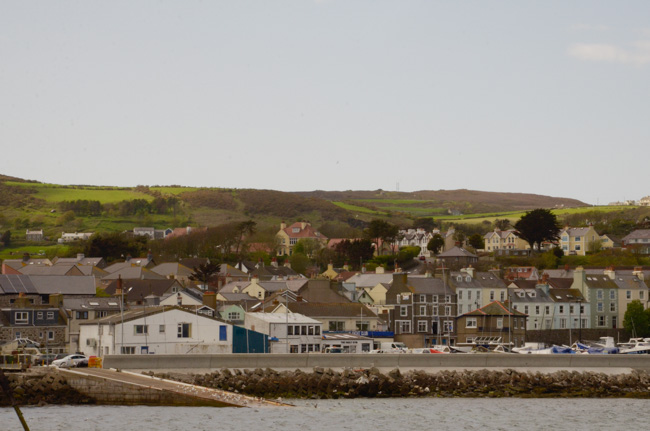
The original plan was to land in Zodiacs, but we were able to dock the ship in Port St. Mary. It is the only port in Man that is not dependent on high tide.
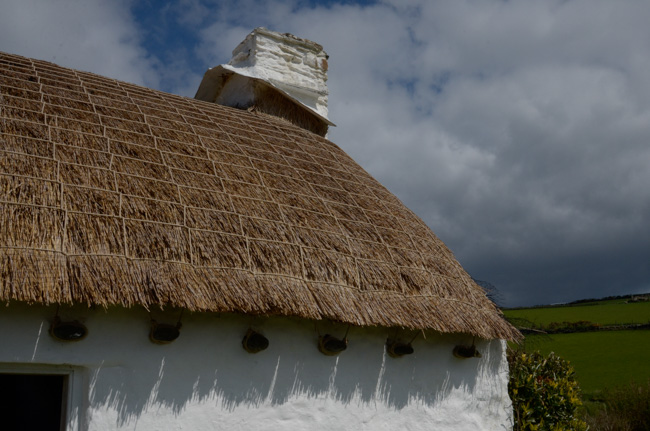
Our first stop was the living museum village of Cregneash. The local tradition of thatching features wires that clamp the roof to the house -- an indication of fierce winds.
It was a pretty village and one of the last strongholds of the Manx language. Click for a rendition of a Manx air.
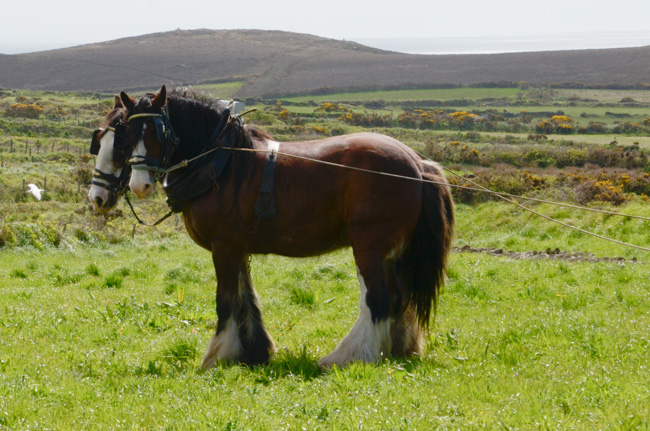
A local farmer attempted to demonstrate working with a Clydesdale team. The horses had other ideas. He could drive them around the village, but as soon as he hooked them up for work, they protested quietly but firmly.
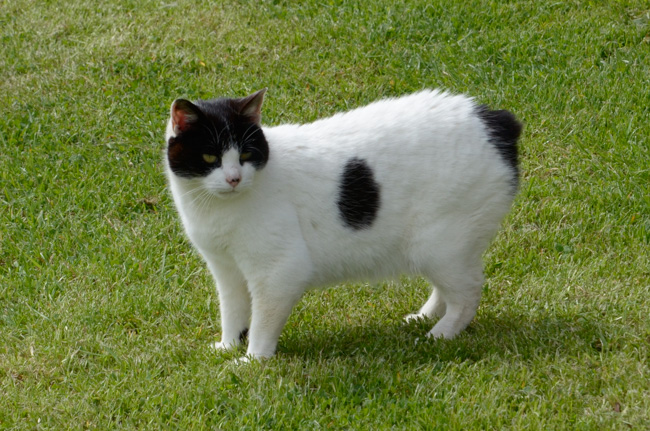
I rejoiced to discover a Manx cat in residence. He was a great ham!
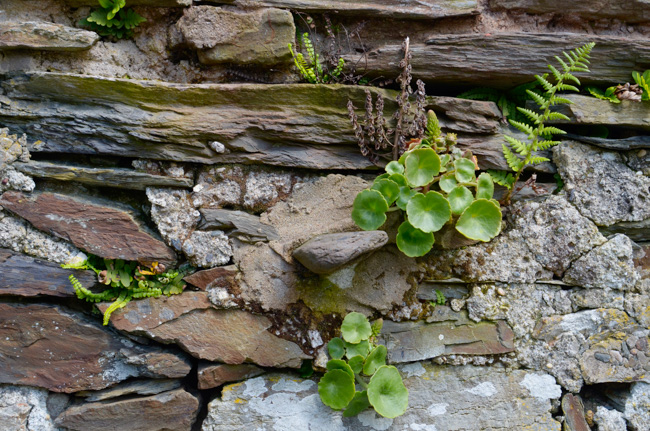
As in any climate with abundant water, plants thrive in the most unlikely places.
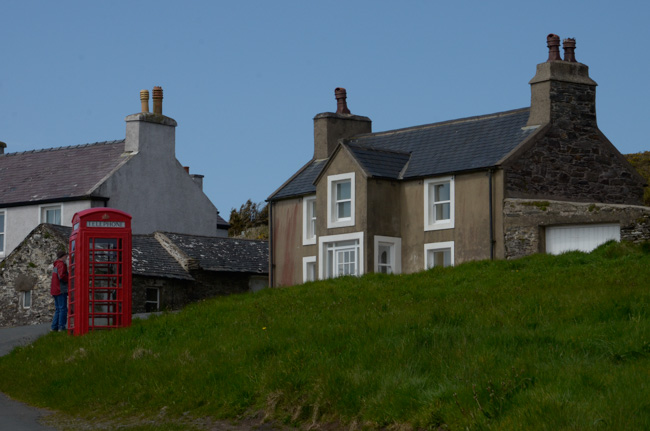
The village even had an antique telephone booth. The equipment had been removed from most such booths that we saw. I didn't check this one to see if it was still usable.
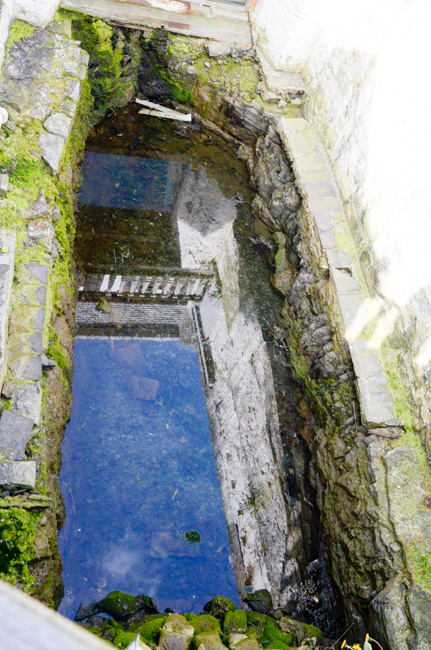
Our next stop was the Nautical Museum in Castletown. We both loved this little museum. Of the many exhibits, the best was a simple-looking parlor that turned out to be filled with secret passages and hidey-holes. The building was the residence of a prominent banker named George Quayle. Underneath his house, however, was a hidden boathouse for his armed yacht Peggy. No one knows for sure, but the respectable banker may have had a side job as a smuggler! When he died in 1835 the boat was forgotten until being discovered in 1935 or 1941 or 1950 or 1967. (The stories I found online differ, which seems appropriate all things considered. An oral history transcription (link opens in new window) contains fascinating details. The information about Peggy starts at page 22.) In any event, the remaining heir bequeathed the boat and boathouse to the Manx nation. The yacht is considered the oldest unrestored specimen of her type. The Manx National Heritage has removed her, and she now resides in a conservation center. Her long-hidden home is now empty and her future uncertain.
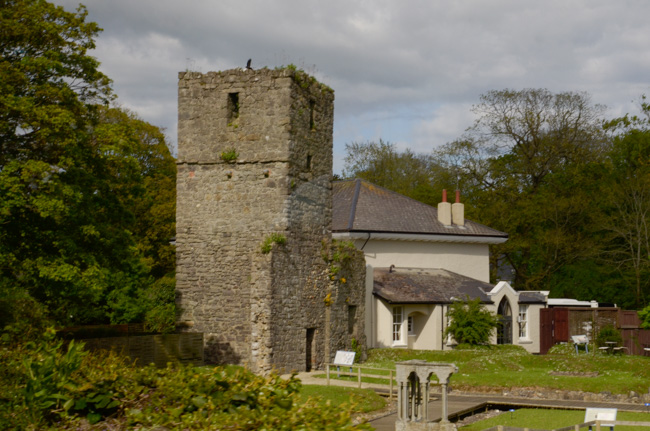
Our next stop was Rushen Abbey. It was a pleasant place, but it doesn't hold a candle to the story of Peggy.
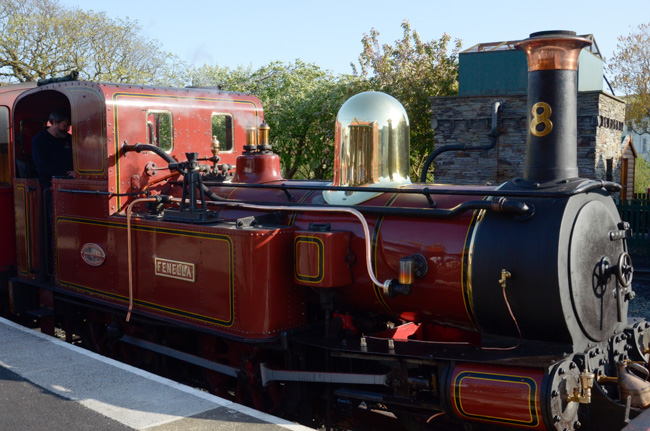
We had eagerly awaited the Isle of Man Steam Railway excursion and it did not disappoint. We rode a private train from Colby Level, near the abbey, to Port Erin, the southern terminus. The diminutive locomotive gleamed with polish.
Rail fans (you know who you are) can get a detailed history of the line from Wikipedia.
Jim and I snagged seats in the first class carriage.
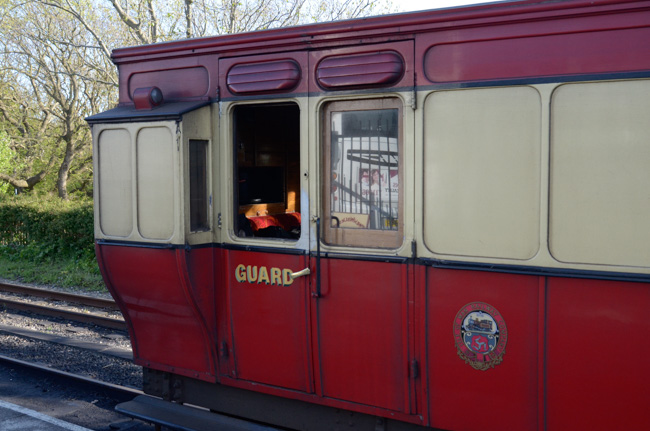
I never did get a good picture of the Isle of Man flag, but the seal on the side of this caboose shows the peculiar three-legged feature that fascinated me. It is called a triskeles. No-one knows exactly how the symbol came to be associated with the island, but it is documented as early as the 13th century.
There is a discussion of the country's coat of arms in Wikipedia. The motto translates to "whichever way you throw, it will stand," and it is an interesting image of always landing on your feet.
I would like more time on the Isle of Man, but we were soon off again.
Click your "back" button to return to the previous page or click for our picture album.